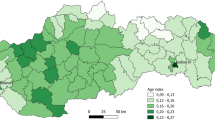Abstract
In this study, the problem of critical ambulance routing scheme, which is a significant variant of the quickest path problem (QPP), was investigated. The proposed QPP incorporates additional factors, such as service-level agreement (SLA) and energy cooperation, to compute the SLA-energy cooperative quickest route (SEQR) for a real-time critical healthcare service vehicle (e.g., ambulance). The continuity of critical healthcare services depends on the performance of the transport system. Therefore, in this research, SLA and energy were proposed as important measures for quantifying the performance. The developed algorithm (SEQR) evaluates the SLA-energy cooperative quickest ambulance route according to the user’s service requirements. The SEQR algorithm was tested with various transport networks. The SLAs and energy variation were quantified through the mean candidate s–t qualifying service set (QSS) routes for the service, average hop count, and average energy efficiency.
Similar content being viewed by others
References
Barthelemy, M.: Models of network growth. In: Barthelemy, M. (ed.) Morphogenesis of Spatial Networks, Lecture Notes in Morphogenesis pp. 265–286. Springer, Cham (2018)
Papadopoulos, K.; Christofides, D.: A fast algorithm for the gas station problem. Inf. Proces. Lett. 131, 55–59 (2018)
Vegni, A.M.; Biagi, M.; Cusani, R.: Smart vehicles, technologies and main applications in vehicular ad hoc networks. In: Giordano, L.G., Reggiani, L. (eds.) Vehicular Technologies—Deployment and Applications. InTech, Rijeka (2013)
Sharma, A.; Kumar, R.: A framework for pre-computated multi-constrained quickest QoS path algorithm. J. Telecommun. Electron. Comput. Eng. (JTEC) 9, 73–77 (2017)
Black, J.: Urban Transport Planning: Theory and Practice. Routledge, London (2018)
Sharma, A.; Kumar, R.: Risk-energy aware service level agreement assessment for computing quickest path in computer networks. Int. J. Reliab. Saf. 13(1–2), 96–124 (2019)
Damania, R.; Russ, J.; Wheeler, D.; Barra, A.F.: The road to growth: measuring the tradeoffs between economic growth and ecological destruction. World Dev. 101, 351–376 (2018)
Sharma, A.; Kumar, R.; Bajaj, R.K.: On Energy-constrained Quickest Path Problem in Green Communication Using Intuitionistic Trapezoidal Fuzzy Numbers. Recent Pat. Compu. Sci. 12, 1–9 (2019). https://doi.org/10.2174/2213275911666181025125224
Zheng, K.: Enabling “protocol routing”: revisiting transport layer protocol design in internet communications. IEEE Internet Comput. 21, 52–57 (2017)
Kuppusamy, P.; Kalpana, R.; Rao, P.V.: Optimized traffic control and data processing using IoT. In: Cluster Computing, pp. 1–10 (2018)
Ye, H.; Ren, Q.; Hu, X.; Lin, T.; Shi, L.; Zhang, G.; et al.: Modeling energy-related CO\(_2\) emissions from office buildings using general regression neural network. Resour. Conserv. Recycl. 129, 168–174 (2018)
Aktas, E.; Bloemhof, J.; Fransoo, J.C.; Günther, H.-O.; Jammernegg, W.: Green Logistics Solutions. Springer, Berlin (2018)
Andersen, P.H.; Mathews, J.A.; Rask, M.: Integrating private transport into renewable energy policy: the strategy of creating intelligent recharging grids for electric vehicles. Energy Policy 37, 2481–2486 (2009)
Harris-Kojetin, L.; Sengupta, M.; Park-Lee, E.; Valverde, R.: Long-term care services in the United States: 2013 overview. In: Vital & Health Statistics. Series 3, Analytical and Epidemiological Studies, pp. 1–107 (2013)
Fikar, C.; Hirsch, P.: Home health care routing and scheduling: a review. Comput. Oper. Res. 77, 86–95 (2017)
Duque, P.M.; Castro, M.; Sörensen, K.; Goos, P.: Home care service planning. The case of Landelijke Thuiszorg. Eur. J. Oper. Res. 243, 292–301 (2015)
Rais, A.; Viana, A.: Operations research in healthcare: a survey. Int. Trans. Oper. Res. 18, 1–31 (2011)
Redjem, R.; Marcon, E.: Operations management in the home care services: a heuristic for the caregivers’ routing problem. Flex. Serv. Manuf. J. 28, 280–303 (2016)
Milburn, A.B.: Operations research applications in home healthcare. In: Hall, R.W. (ed.) Handbook of Healthcare System Scheduling, pp. 281–302. Springer, Berlin (2012)
Cook, D.J.; Duncan, G.; Sprint, G.; Fritz, R.L.: Using smart city technology to make healthcare smarter. Proc. IEEE 106, 708–722 (2018)
Issabakhsh, M.; Hosseini-Motlagh, S.-M.; Pishvaee, M.-S.; Saghafi Nia, M.: A vehicle routing problem for modeling home healthcare: a case study. Int. J. Transp. Eng. 5, 211–228 (2018)
Aceto, G.; Persico, V.; Pescapé, A.: The role of information and communication technologies in healthcare: taxonomies, perspectives, and challenges. J. Netw. Comput. Appl. 107, 125–154 (2018)
Kumar, R.; Cholda, P.: A framework for continuity of mission-critical network services. In: 2015 IEEE International Conference on Advanced Networks and Telecommuncations Systems (ANTS), pp. 1–3 (2015)
Evans, J.: Optimization Algorithms for Networks and Graphs. Routledge, London (2017)
Prakash, A.A.: Pruning algorithm for the least expected travel time path on stochastic and time-dependent networks. Transp. Res. B Methodol. 108, 127–147 (2018)
Issac, P.; Campbell, A.M.: Shortest path problem with arc failure scenarios. EURO J. Transp. Logist. 6, 139–163 (2017)
Huang, Y.; Zhao, L.; Van Woensel, T.; Gross, J.-P.: Time-dependent vehicle routing problem with path flexibility. Transp. Res. B Methodol. 95, 169–195 (2017)
Stefanello, F.; Buriol, L.S.; Hirsch, M.J.; Pardalos, P.M.; Querido, T.; Resende, M.G.; et al.: On the minimization of traffic congestion in road networks with tolls. Ann. Oper. Res. 249, 119–139 (2017)
Zhang, D.; Chow, C.-Y.; Liu, A.; Zhang, X.; Ding, Q.; Li, Q.: Efficient evaluation of shortest travel-time path queries through spatial mashups. GeoInformatica 22, 3–28 (2018)
Zhao, T.; Huang, J.; Shi, J.; Chen, C.: Route planning for military ground vehicles in road networks under uncertain battlefield environment. J. Adv. Transp. (2018)
Ferrucci, F.; Bock, S.; Gendreau, M.: A pro-active real-time control approach for dynamic vehicle routing problems dealing with the delivery of urgent goods. Eur. J. Oper. Res. 225, 130–141 (2013)
Ferrucci, F.: Pro-active Dynamic Vehicle Routing: Real-Time Control and Request-Forecasting Approaches to Improve Customer Service. Springer Science & Business Media, Berlin (2013)
Alshaer, H.; Ernst, T.; de La Fortelle, A.: A QoS architecture for provisioning high quality in intelligent transportation services. In: 2012 IEEE Network Operations and Management Symposium (NOMS), pp. 595-*598 (2012)
Alshaer, H.; Ernst, T.; de La Fortelle, A.: A novel distributed QoS control scheme for multi-homed vehicular networks. In: Daher, R. (ed.) Roadside Networks for Vehicular Communications: Architectures, Applications, and Test Fields, pp. 150–168. IGI Global, Hershey (2013)
Ferrucci, F.: Introduction to tour planning: vehicle routing and related problems. In: Pro-active Dynamic Vehicle Routing, pp. 15–79. Springer, Berlin (2013)
Liu, Y.; Seah, H.S.; Shou, G.: Constrained energy-efficient routing in time-aware road networks. GeoInformatica 21, 89–117 (2017)
Sever, D.: Routing in Stochastic Networks. Technische Universiteit Eindhoven, Eindhoven (2014)
Benabdouallah, M.; Bojji, C.: A review on coverage models applied to emergency location. Int. J. Emerg. Manag. 14, 180–199 (2018)
Boukhanovsky, A.V.; Krzhizhanovskaya, V.V.; Bubak, M.: Urgent Computing for Decision Support in Critical Situations. Elsevier, Amsterdam (2018)
Sharma, A.; Kumar, R.: An optimal routing scheme for critical healthcare HTH services—an IOT perspective. In: 2017 Fourth International Conference on Image Information Processing (ICIIP), pp. 1–5 (2017)
Priyan, M.; Devi, G.U.: Energy efficient node selection algorithm based on node performance index and random waypoint mobility model in internet of vehicles. In: Cluster Computing, pp. 1–15 (2017)
Sawand, A.; Djahel, S.; Zhang, Z.; Nait-Abdesselam, F.: Toward energy-efficient and trustworthy eHealth monitoring system. China Commun. 12, 46–65 (2015)
Porter, M.E.; Kramer, M.R.: The big idea: Creating shared value. Harvard Bus. Rev. 89(1), 1–12 (2011)
Elbouzekri, A.; Elhassania, M.; Alaoui, A.E.H.: A hybrid ant colony system for green capacitated vehicle routing problem in sustainbale transport. J. Theor. Appl. Inf. Technol. 54, 1–11 (2013)
Demir, E.; Bektaş, T.; Laporte, G.: A review of recent research on green road freight transportation. Eur. J. Oper. Res. 237, 775–793 (2014)
Ćirović, G.; Pamučar, D.; Božanić, D.: Green logistic vehicle routing problem: routing light delivery vehicles in urban areas using a neuro-fuzzy model. Expert Syst. Appl. 41, 4245–4258 (2014)
Soysal, M.; Çimen, M.; Demir, E.: On the mathematical modeling of green one-to-one pickup and delivery problem with road segmentation. J. Clean. Prod. 174, 1664–1678 (2018)
Yang, X.; Zeng, Z.; Wang, R.; Sun, X.: Bi-objective flexible job-shop scheduling problem considering energy consumption under stochastic processing times. PloS One 11, e0167427 (2016)
Wu, F.; Sioshansi, R.: A stochastic flow-capturing model to optimize the location of fast-charging stations with uncertain electric vehicle flows. Transp. Res. D Transp. Environ. 53, 354–376 (2017)
Butt, T.A.; Iqbal, R.; Shah, S.C.; Umar, T.: Social internet of vehicles: architecture and enabling technologies. Comput. Electr. Eng. 69, 68–84 (2018)
Zeng, W.; Church, R.L.: Finding shortest paths on real road networks: the case for A. Int. J. Geogr. Inf. Sci. 23, 531–543 (2009)
Ahuja, R.K.: Network flows: theory, algorithms, and applications. Pearson Education (2017)
Zhan, F.B.; Noon, C.E.: Shortest path algorithms: an evaluation using real road networks. Transp. Sci. 32, 65–73 (1998)
Chen, B.Y.; Lam, W.H.; Sumalee, A.; Li, Q.; Shao, H.; Fang, Z.: Finding reliable shortest paths in road networks under uncertainty. Netw. Spatial Econ. 13, 123–148 (2013)
Chen, Y.; Chin, Y.: The quickest path problem. Comput. Oper. Res. 17, 153–161 (1990)
Gen-Huey, C.; Yung-Chen, H.: Algorithms for the constrained quickest path problem and the enumeration of quickest paths. Comput. Oper. Res. 21, 113–118 (1994)
Chen, G.-H.; Hung, Y.-C.: On the quickest path problem. Inf. Process. Lett. 46, 125–128 (1993)
Lin, Y.-K.: Optimal pair of minimal paths under both time and budget constraints. IEEE Trans. Syst. Man Cybern. A Syst. Humans 39, 619–625 (2009)
Fredman, M.L.; Tarjan, R.E.: Fibonacci heaps and their uses in improved network optimization algorithms. J. ACM (JACM) 34, 596–615 (1987)
Bolot, J.-C.: End-to-end packet delay and loss behavior in the Internet. In: ACM SIGCOMM Computer Communication Review, pp. 289–298 (1993)
Chen, S.; Song, M.; Sahni, S.: Two techniques for fast computation of constrained shortest paths. IEEE/ACM Trans. Netw. (TON) 16, 105–115 (2008)
Chen, S.; Song, M.; Sahni, S.: Two techniques for fast computation of constrained shortest paths. In: Global Telecommunications Conference, 2004. GLOBECOM’04. IEEE, pp. 1348–1352 (2004)
Acknowledgements
Authors are thankful for the financial grant for this paper from the research project titled, “Reliability Modeling and Optimized Planning of Risk-based Resilient Networks” sponsored by Indo-Polish Program under Grant DST/INT/POL/P-04/2014. We also want to thank Dr. Razi Iqbal and anonymous reviewers for aiding the valuable suggestions to improve the quality of manuscript.
Author information
Authors and Affiliations
Corresponding author
Rights and permissions
About this article
Cite this article
Sharma, A., Kumar, R. Service-Level Agreement—Energy Cooperative Quickest Ambulance Routing for Critical Healthcare Services. Arab J Sci Eng 44, 3831–3848 (2019). https://doi.org/10.1007/s13369-018-3687-z
Received:
Accepted:
Published:
Issue Date:
DOI: https://doi.org/10.1007/s13369-018-3687-z




